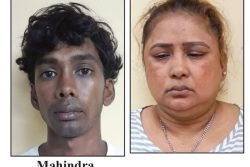
Paralysis of the tongue
In all my years of practice, I can only recall seeing this condition once. There is no need therefore, for me to make big deal of this malady. However, since one of my smart books documents this problem as a serious ailment of the mouth, I will faithfully reproduce its comments here. The following text, ad verbatim, comes from the Merck Veterinary Manual, Sixth edition. This book is the veterinarian’s vade mecum (bible).
Tongue paralysis is a partial or complete loss of function of the tongue that may be peripheral or central in origin. Rough manipulation and excessive pulling on the tongue during dental examination may cause the peripheral type. Laceration of the tongue by broken glass or other sharp objects in the feed bowl, as well as various surgical procedures performed on the tongue to prevent self-nursing have also caused tongue paralysis. Paralysis of central origin may accompany or follow such conditions as upper respiratory infection, meningitis, botulism, or mouldy-corn disease. The unilaterally affected tongue is deviated toward the non-affected side; the bilaterally affected tongue is limp and often protrudes through the relaxed jaws. In mild cases of either central or peripheral origin, a weakness in the muscle power of the tongue is most evident.
Identifying the cause and removing it or placing the animals in an environment free of the causative agent would be the initial logical treatment procedures. When a specific disease such as meningitis is identified, the indicated treatments are for those specific diseases. Careful nursing, along with providing undamaged, toxin-free feed, and adequate potable water will aid those cases where spontaneous recovery is likely.
When the condition persists beyond six weeks, the likelihood of regaining normal function is slight. Of course, if the animal cannot eat, starvation will be the sequel. Euthanasia will have to be considered.
Teeth problems
Before we deal with pathological conditions, it is best I think for us to understand what is normal. Let’s begin with numbers. Every veterinarian has, I’m sure, experienced clients arriving in a panic with the complaint that their pup’s teeth are falling out. Well that, for example, is absolutely normal. Dogs, when they are young, have baby teeth (deciduous teeth, as they are called), which are lost as they grow older. They begin to lose their teeth at four – five months of age.
There are 28 baby teeth in a pup’s mouth. Kittens have 26 teeth.
In the pup there are six incisors (the front teeth) at the top and six at the bottom, a total of twelve incisors. On each side in the top and bottom jaw there is one (long) canine tooth, giving a total of four in the whole mouth. Then there are the premolars. These are the big chewing/crushing teeth on the side of the month. There are two of these – three on each side at the top and the bottom. Puppies do not have molar teeth.
Kittens’ teeth are similar to those of puppies, except that the lower jaw only has two premolars on each side.
Actually, there is a formula which can be used:
Pup 2(i 3/3 c 1/1 p3/3) = 28
Kitten 2(i 3/3 c 1/1 p3/3) = 26
i = incisors of pups/kittens
c = Canines of pups/kittens
p = premolars of pups/kitten
Adult dogs have 42 teeth – the more to bite you with.
There are six incisors in the top jaw (maxilla) and six in the bottom jaw (mandibula). The canine teeth (those long dangerous looking ones you see at the side of a Doberman’s mouth) number four – one on each of the top and bottom jaw. As the puppy sheds its 12 premolars (three on each side at the top and bottom), space is made for four on each side to develop giving a total of 16 in the top and bottom jaw. Adult dogs also have large molar teeth – two on each side of the maxilla (top jaw) and three on each side of the mandibula (bottom jaw).
Adult cats have addition to the same amount of incisors, canines and premolars, four molar teeth – one on each side of the top and bottom jaw. Adult cats therefore have 30 teeth.
The formula for adult dogs and cats would be:
Dog 2(I 3/3 C 1/1 P 4/4 M 3/3) = 42
Cat (I 3/3 C 1/1 P 3/3 M 1/1) = 30
I = Incisors of the adult dog/cat
C = Canines of the adult dog/cat
P = Premolars
M = Molars
Enough figures for one day.








